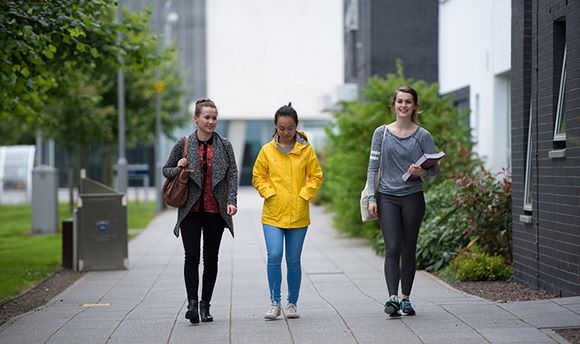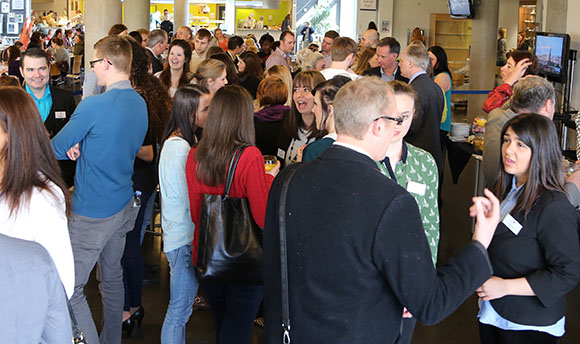Doctoral Bursaries - Clinical Audiology, Speech and Language Research Centre
Bursary topics in the Clinical Audiology, Speech and Language Research Centre as part the of the 2025 PhD Bursary at QMU, Edinburgh are as follows:
- Navigating Dual Sensory Loss (deafblindness) in Scotland: A Qual-itative Exploration of Lived Experiences and Policy Implications (BUR 25-04)
- The application of ultrasound technology to speech and language therapy – ultrasound evaluation of swallowing and/or laryngeal ultrasound (BUR 25-05)
Please note that interviews for topic BUR 25-04 will take place on Thursday 8th May 2025 and interviews for topic BUR 25-05 will take place on Friday 9th May 2025
This pioneering research project aims to explore the lived experiences of individuals with dual sensory loss (DSL), also known as deafblindness, in Scotland, addressing critical gaps in policy, academic understanding, and service provision. DSL, characterised by combined vision and hearing impairment, ranges from mild loss to total deafness and blindness (Jaiswal et al., 2018; Wittich et al., 2013). Despite being a distinct condition with unique challenges that exceed those of single sensory loss (Dammeyer, 2014; Möller, 2003), DSL currently lacks legal recognition or a formal definition in Scotland. This absence potentially leads to inadequate support and misunderstanding of the specific needs of people who experience DSL.
The prevalence of DSL increases with age, affecting between 1.3% and 55.6% of adults over 65 (Bright et al., 2023), making it a significant public health concern requiring an intersectional approach in an aging population.
Through in-depth qualitative research, including semi-structured interviews and participatory methods, this study will:
- Document and analyse the daily realities, challenges, and coping strategies of people with DSL
- Examine the impact of proposed holistic service provision reforms
- Develop evidence-based policy recommendations for Scottish context
The successful candidate will gain expertise in:
- Advanced qualitative research methods
- Policy analysis and development
- Working with vulnerable people
- Stakeholder engagement and impact generation
This research will contribute to interdisciplinary disability studies scholarship while producing practical recommendations for improving service delivery. Working alongside key stakeholders in the deafblind community and policy sphere, the project offers an opportunity to drive real-world change in how Scotland supports individuals with DSL.
For more information, please contact: Dr Christine Johnson (CJohnson@qmu.ac.uk) and Dr Rachel Mapson (RMapson@qmu.ac.uk)
The application of ultrasound to speech and language therapy (SLT) is an emerging tool and a fast developing field in the last few years. QMU has been a leading institute in ultrasound research in Speech and Langauge Therapy in the UK. We look forward to the opportunity to welcome a new PhD candidate to work on a topic which supports the development of this project.
There are two main focuses of ultrasound applications in SLT within QMU, including ultrasound evaluation of swallowing (USES) and laryngeal ultrasound (LUS).
The topic on the application of ultrasound to swallowing into clinical practice, primarily in the area of dysphagia screening, monitoring and biofeedback. USES has the potential to make an impact on NHS service provision. It will provide a more accessible tool for supporting clinical decision-making, which is minimally invasive and does not involve radiation exposure. It will also reduce the economic cost of healthcare as the equipment is highly portable and can be carried out as outpatient or in domiciliary settings. This could lead to better management of dysphagia, reducing the impact of dysphagia on quality of life and minimising the healthcare cost from inappropriately managed swallowing problems, including severe outcomes such as hospitalisation and death. Further information on the current projects could be found on www.swallow-vision.com, and potential application in one of the three clinical areas would be encouraged: dysphagia screening, dysphagia monitoring and biofeedback in swallowing rehabilitation.
The development of LUS in assessing the vocal fold movement in the pediatric population was supported by an Innovation Fellowship 2023-24. The results of the initial public and patient involvement activities showed the values of LUS from both the clinicians’ and parents’ perspectives. A potential PhD project focusing on the continued development of the application of laryngeal ultrasound would be welcomed.
Contact for enquiries: Dr Joan Ma (JMa@qmu.ac.uk)



